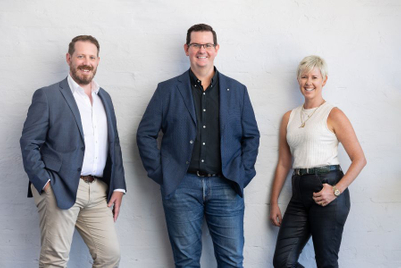
Just as buying behaviour has evolved among consumers, so too has it changed among businesses shopping for technology. Today’s business buyers engage in more self-discovery and more trials than before and also see their function as a vital part of the overall go-to-market strategy—rather than a mere internal function. Thus the role of B2B technology marketing organisations needs to evolve toward helping buyers procure products and services that make a difference to their customer, rather than selling them technology based on features and capabilities. Here are some practical suggestions that B2B marketers can consider as they change their internal practices and investments to align with this new reality.
1. Measure engagement count, not leads
In the past, a contact between a targeted buyer and a vendor, such as attending a marketing event, a clickthrough on an email or an inbound query typically qualified as a lead that would be counted and followed up with a phone call, either by a sales representative or the outbound telemarketing team.
That’s no longer the case. Given that buyers are increasingly self-driven and typically engage in self-discovery, accessing a lot of content before they are willing to talk, they are likely to be annoyed with premature outreach by the vendor. Instead, vendors need to deploy marketing-automation tools to measure engagement of their targeted buyer across the marketing mix and measure their overall engagement score prior to reaching out. During this phase, the focus of the interaction must be largely educational and product-neutral. This allows the buyer to see the vendor as a trusted advisor, rather than a pushy vendor. Only reach out for a face-to-face meeting after a threshold of engagement is reached.
2. The new QFA: ‘A’ does not stand for ‘appointment’
Previously, a lead was followed by the marketing organisation with the objective of generating a ‘qualified first appointment’: a face-to-face meeting between your sales representative and the potential buyer. Marketing’s objective now must be to move the buyer towards a ‘qualified first action’—which may have nothing to do with a meeting. For example, an online signup for a free trial may be better qualification of intent to purchase than an acceptance of a face-to-face meeting request.
Marketers, in partnership with their sales organisations, through analysis of past purchase behaviours, must define a set of actions that would indicate a greater intent to buy and lead buyers towards those rather than pushing towards a meeting. Many of these QFAs can be enabled through technology, thereby reducing cost for the vendor while better satisfying the needs of a buyer on the journey of self-discovery.
3. Insight/solution selling through gamification
The past decade has seen the adoption of many sales approaches, such as insight selling, challenger sales and solution selling. Marketing can make a big difference by incorporating gamification into its market outreach. The value of a gamification-led approach to changing behaviours and teaching has been well documented. Marketers can better provide insightful education and reframe discussion in the buyer’s mind by using gamification to create a more engaging interaction.
4. Show me, don’t tell me
Today’s buyers are sceptical, and in a recent Forrester report a majority of business and IT buyers agreed with statements such as “I usually scan the information and then throw it in the trash,” “Vendors give me too much material to sort through” and “Much of the material is useless.”
Marketing organisations need to adapt by allowing customers to experience the end result of their solutions through setting up demonstration environments that clearly tell the buyer the ‘pre’ and ‘post’ experiences of leveraging their solutions.
5. Let me buy
Technologies like cloud computing have taken away the fear factor in large technology buying. While the need for due diligence hasn’t gone away, given the pace of business, ‘fail fast‘ is the new mantra. Today everything can be bought online without the need for a face-to-face interaction, and allowing your customers to purchase or at least signup for a full trial online is a must.
This does not mean all vendors need to set up ‘e-shops’ with published prices and a hands-off approach. Instead, vendors can leverage technology to set up online guided buying centers where the sales representative and the buyer jointly interact over the web—in a consultative manner in a matter of minutes—to complete the purchase decision.
Marketers need to adapt themselves to meet the changing the needs of the business buyer. Marketers are uniquely positioned to drive this change by working across the different groups with the organisation to serve this new world.
Marketers need to engage closer than ever before internally, with the product teams, to allow showcasing of capabilities, with the learning group to inculcate gamification-based learning approaches and with legal, sales and operational teams to simplify the purchase process. This will allow marketing organisations to drive greater effectiveness and develop a more engaging relationship with their target buyers. Of course we all know as marketers, the more engaged a buyer, the greater the chance of a one-time and repeat purchase.
Srinivas Padmanabharao is director of product marketing for Asia Pacific and Japan at Akamai Technologies



.jpg&h=334&w=500&q=100&v=20250320&c=1)
.jpg&h=334&w=500&q=100&v=20250320&c=1)
.jpg&h=334&w=500&q=100&v=20250320&c=1)



.jpg&h=334&w=500&q=100&v=20250320&c=1)
.jpg&h=334&w=500&q=100&v=20250320&c=1)

.jpg&h=268&w=401&q=100&v=20250320&c=1)






